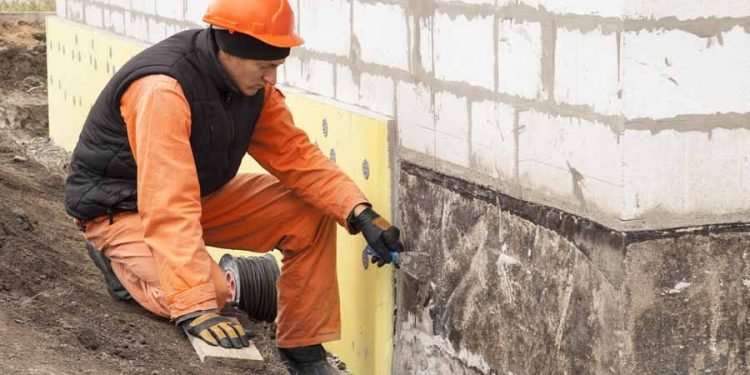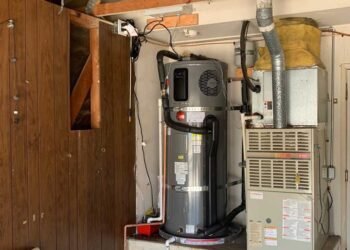If you own a home in Minneapolis, MN, or in most areas in Texas, you may be familiar with the importance of maintaining a strong and stable foundation. The extreme weather conditions in the area, either freezing temperatures, heavy snowfall, and frequent freeze-thaw cycles, or, on the other side, extreme hot and dry climate, can take a toll on your home’s foundation over time, explains Granite Foundation Repair in Arlington. Did you know that foundation problems can lead to a host of issues, including cracks in walls and floors, uneven floors, doors and windows that don’t close properly, and even structural damage?
When facing foundation issues, it’s crucial to take prompt action to prevent further damage and protect the value of your home. With various foundation repair methods available in the market, it can be overwhelming to determine which one is the best for your specific situation. Below, we explore different methods of foundation repair Minneapolis MN to help you make an informed decision.
Foundation Piering
Foundation piering, also known as underpinning, is a common method used for repairing foundation settlement issues. It involves installing steel piers or helical piers into the ground to support and lift a sinking foundation. These piers are driven deep into the soil until they reach stable ground, and then they are used to lift the foundation back to its original position.
There are two main types of foundation piering: push piers and helical piers. Push piers are driven into the soil using hydraulic force, while helical piers are screwed into the soil using a rotating motion. Both types of piers are effective in stabilizing and lifting a settling foundation, and the choice between them depends on factors such as soil conditions, load-bearing capacity, and accessibility.
Foundation Wall Stabilization
Foundation wall stabilization is a method used to address bowing, leaning, or cracking foundation walls. These issues can be caused by hydrostatic pressure from water-saturated soil, expansive clay soil, or other factors that push against the foundation walls.
One common method for foundation wall stabilization is installing carbon fiber straps or steel braces on the interior surface of the walls. These materials are attached to the walls and provide additional support to prevent further movement or cracking. Another method is to install wall anchors or helical tiebacks, which are driven through the foundation walls into the ground and then tightened to stabilize the walls and prevent them from bowing or leaning further.
Foundation Slabjacking
If you have a concrete slab foundation that has settled or sunk, slabjacking may be a suitable repair method. Also known as mud jacking or slab leveling, this process involves injecting a grout mixture underneath the sunken slab to lift it back to its original position.
Slabjacking is typically used for smaller areas, such as patios, sidewalks, or garage floors, and is a cost-effective solution compared to other methods. It requires drilling small holes into the slab, injecting the grout mixture, and then patching the holes. However, slabjacking may not be suitable for larger or severely damaged foundations.
Polyurethane foam leveling & lifting offers a modern alternative to traditional slabjacking methods. This technique uses high-density foam, which is injected beneath the slab to gently raise and stabilize it. The foam expands to fill voids and support the concrete without the need for heavy equipment or extensive drilling. It’s a faster, cleaner, and more efficient process that can be used for various applications, including sidewalks, driveways, and even larger foundation repairs.
Waterproofing and Drainage
Water intrusion is a common cause of foundation problems, especially in areas with heavy rainfall or melting snow. If your foundation has water-related issues, it’s crucial to address them promptly to prevent further damage.
Proper waterproofing and drainage can help keep water away from your foundation and prevent it from causing damage. This can include installing a waterproof membrane on the exterior of the foundation walls, installing French drains or sump pumps to redirect water away from the foundation, or re-grading the landscape to ensure proper water runoff.
Concrete Resurfacing
If your foundation has minor cracks or surface damage, concrete resurfacing may be a viable option. Concrete resurfacing involves applying a new layer of concrete over the existing foundation to repair cracks, chips, or other cosmetic issues. This method can help improve the appearance of your foundation and protect it from further damage. However, it may not be suitable for foundations with significant structural issues or extensive damage.
Professional Inspection and Assessment
Before deciding on the best foundation repair method for your home, it’s crucial to have a professional inspection and assessment. A qualified foundation repair expert can assess the condition of your foundation, identify the underlying issues, and recommend the most appropriate repair method based on the specific needs of your foundation.
If you notice any signs of foundation issues in your Minneapolis, MN home, such as cracks in walls or floors, uneven floors, doors or windows that don’t close properly, or other structural issues, do not ignore them. Contact a reputable foundation repair expert to assess the condition of your foundation and recommend the most appropriate repair method to ensure the stability and safety of your home.












